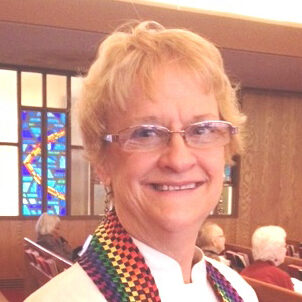Epiphany: Seeing the Light
Have you ever had an “aha” moment when an issue suddenly becomes clear? All the details fall in line and the pattern finally makes sense. It’s hard to explain but a common experience. Sometimes people call it an “epiphany:” a Greek word that means “manifestation,” the  appearance of a divine being, or a sudden intuitive grasp of reality through a simple, striking event. Many of us simply call it “seeing the light.”
appearance of a divine being, or a sudden intuitive grasp of reality through a simple, striking event. Many of us simply call it “seeing the light.”
In almost all Christian traditions around the world, the worship season of Epiphany runs from January 6 each year (the day after “the twelve days of Christmas”) to the day before Ash Wednesday, the beginning of Lent. During these five to nine weeks, the Bible texts invite us to think about how Jesus reflects the full Light of God.
Light, a significant symbol in many religions, is the major image for Epiphany. Jesus said two essential things about the light: “I am the Light of the world,” (John 8:12; 9:5) and “You are the light of the world.”(Matthew 5:14). How could both of these things be true? Over the season of Epiphany, Bible stories give people the opportunity to see an unfolding vision of Jesus as the Light that reveals who God is. As they discover this deeper “aha,” they learn more about how to share God’s presence with others. So the Epiphany season also encourages people to engage in local and global mission.
A lot of home activities help explore the meaning of this season. The book Tossed In Time names four things to do in the home. Here are five more possibilities:
1. Gather the family outside to burn some Christmas greens and light a “Christ candle.” Then someone in a robe asks, “Where is the child who was to be born?” The group says, “Come and see!” Then go inside to say a prayer of thanks for the gift of Jesus. End by singing along with “Go Tell It On the Mountain.”
2. Draw or cut out magazine pictures that remind you of “gifts of love” that people can bring to Christ and give to one another. Include non-material things, as well, such as trust or care. Put the pictures on a cork board or the refrigerator as reminders throughout the season.
3. If you have little ones in the family, help them draw any of the following symbols while talking about its connection to the wise men (“Magi”) and to Jesus’ birth:
+ Candles or lamp – Jesus as the Light of the world
+ Three crowns – the Magi coming to see baby Jesus
+ One crown – Jesus as the “King of kings,” ruling over us all
+ Globe – Spreading the good news of God’s love.
4. One Orthodox tradition since the Middle Ages is blessing homes by sprinkling water and spreading incense. Some congregations in the Western Church (among Roman Catholics and Protestants) offer families a house blessing. It can be a lovely community welcome for a new family, claiming God’s protection, cleansing, and new beginnings.
At the front door you might pray, “May Your Holy Spirit flow through this home and fill each person living here with Your love.” Then bless each room you enter. For example, in the kitchen you could say, “Bless the food prepared here for the bodies of those who dwell here, and may they hold You in their hearts.” Returning to the front door, you might pray, “Sovereign, gracious God, keep safe all who live within these walls and lead them in the right path. This we pray in Jesus’ name. Amen.”
5. The Epiphany season can last up to nine weeks depending on the solar calendar, but the last Sunday is always about Jesus’ Transfiguration. For each week of the season, read and talk with one another about an event in Jesus’ life. For example:
• The Birth of Jesus (Luke 2:1-20)
• He is baptized and affirmed as God’s Son (Matthew 3:13-17)
• Let the little children come to me (Matthew 19:13-15)
• Jesus feeds more than 5,000 people by multiplying a child’s lunch (John 6:1-14)
• He heals a man’s daughter (Luke 8:41-42, 49-55)
• Jesus teaches us how to pray (Matthew 6:9-13)
• He heals an epileptic boy (Luke 9:37-43)
• The Great Commandment (Mark 12:28-31)
• The Transfiguration (Mark 9:2-8).
Whatever we chose to do to celebrate the season, Epiphany can prompt us to see a larger picture of who Jesus is, throwing greater light on the fullness of God.
Betsy Schwarzentraub
See also: Epiphany — God Beyond the Boundaries, Epiphany, Epiphany — Stewards of the Light
** – Betsy Schwarzentraub, Tossed In Time: Steering by the Christian Seasons, pp. 51-52.


